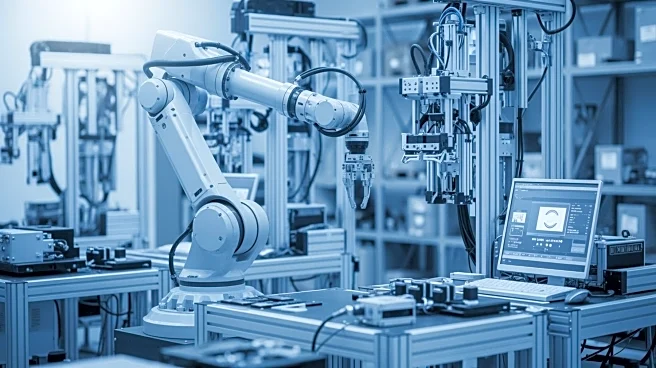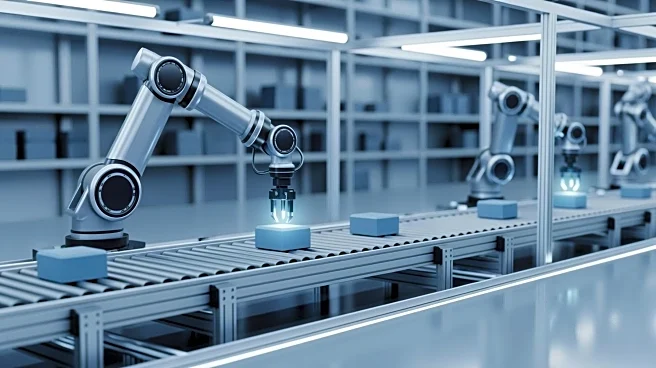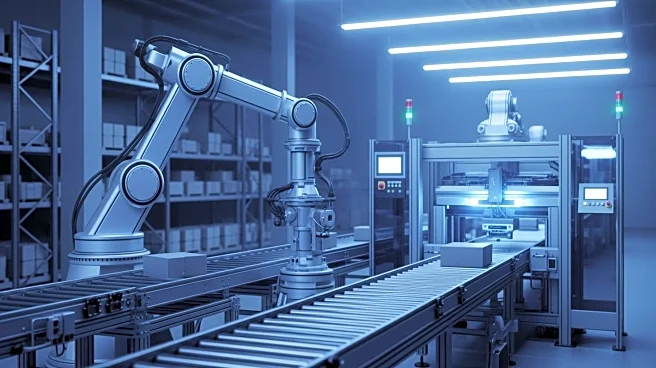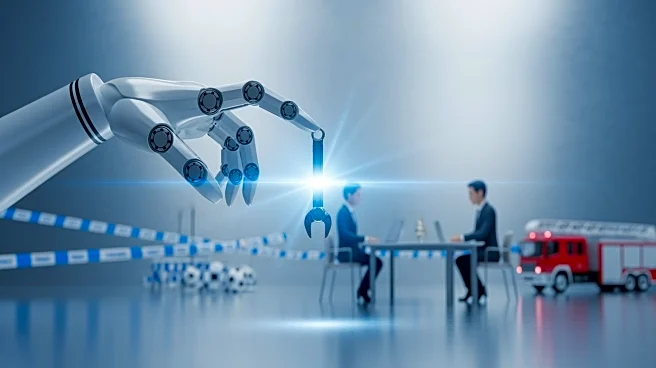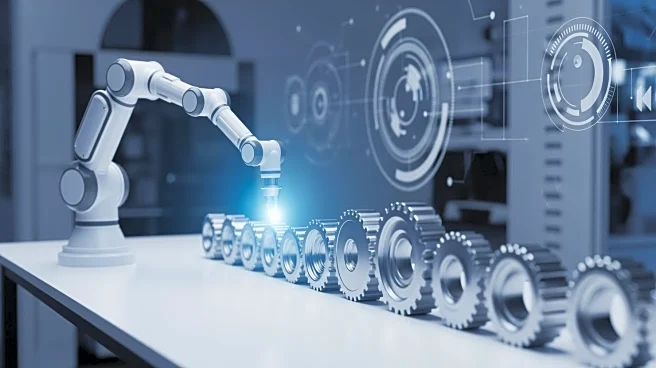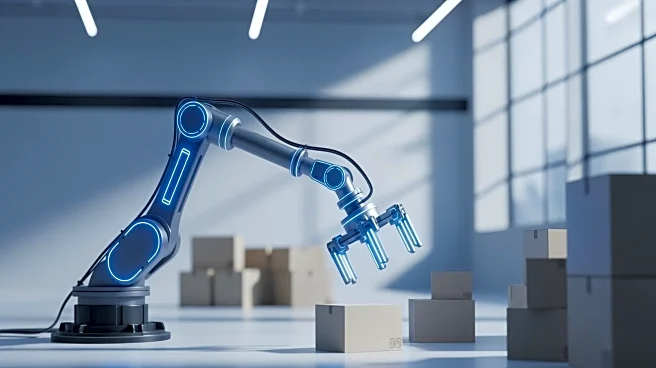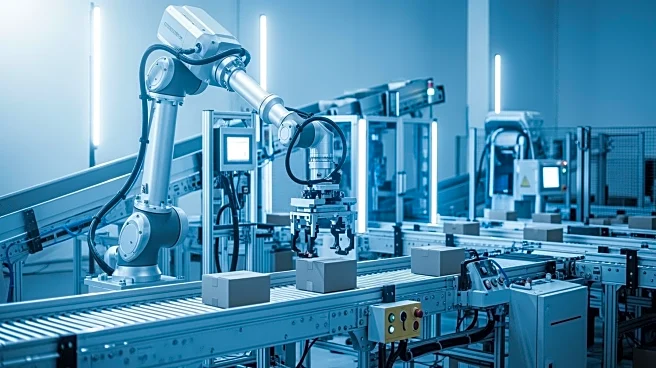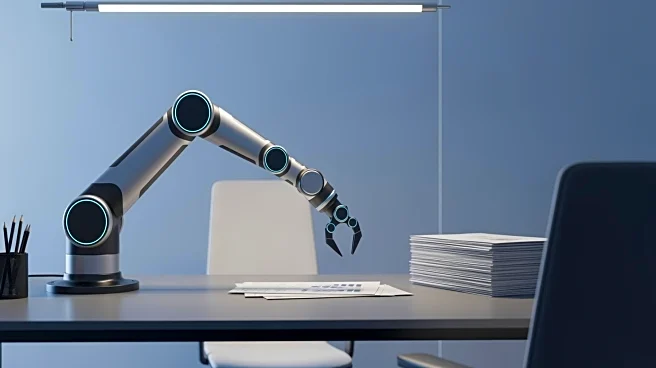What's Happening?
Amazon has unveiled new robots designed to cut costs and improve efficiency in its warehouses. The company is focusing on automation to process more items with fewer employees, who will increasingly focus on maintaining
the robots. Amazon Robotics chief technologist Tye Brady emphasized that the initiative is about the future of work, not just robots. Despite concerns about job displacement, Amazon claims it has created more jobs in the U.S. over the past decade and plans to fill 250,000 positions for the holiday season. CEO Andy Jassy acknowledged that generative AI might reduce the corporate workforce as efficiency gains are realized.
Why It's Important?
Amazon's shift towards automation and robotics reflects broader trends in the e-commerce industry, where companies seek to optimize operations and reduce costs. This move could impact the labor market, as fewer employees may be needed for traditional roles, while new opportunities arise in robot maintenance and AI-related positions. The company's approach highlights the potential for technology to reshape the workforce, prompting discussions about job security and the need for reskilling. As Amazon continues to innovate, other companies may follow suit, accelerating the adoption of robotics in various sectors.
What's Next?
Amazon's plans to fill 250,000 positions for the holiday season indicate a temporary increase in employment, but long-term workforce changes are likely as automation becomes more prevalent. The company may continue to develop and deploy new technologies, potentially leading to further efficiency gains and workforce adjustments. Stakeholders, including employees and labor unions, may respond to these changes by advocating for policies that support worker retraining and job transition programs. The impact of automation on employment will remain a key topic in discussions about the future of work.
Beyond the Headlines
The introduction of robotics in Amazon's warehouses raises ethical considerations about the balance between technological advancement and job preservation. As automation becomes more widespread, companies must address concerns about worker displacement and ensure that employees are equipped with the skills needed for new roles. The shift also underscores the importance of corporate responsibility in managing workforce transitions and supporting affected employees.


